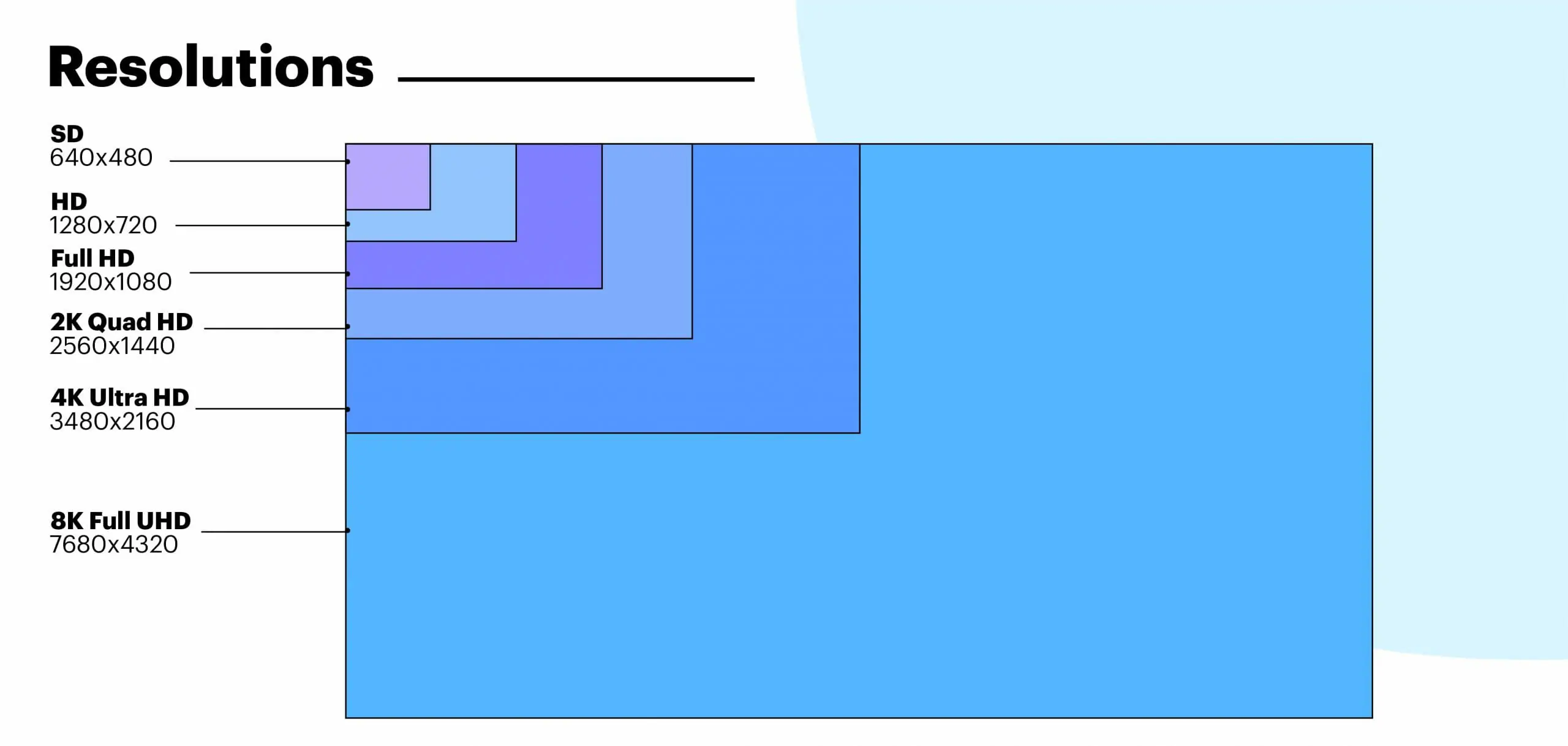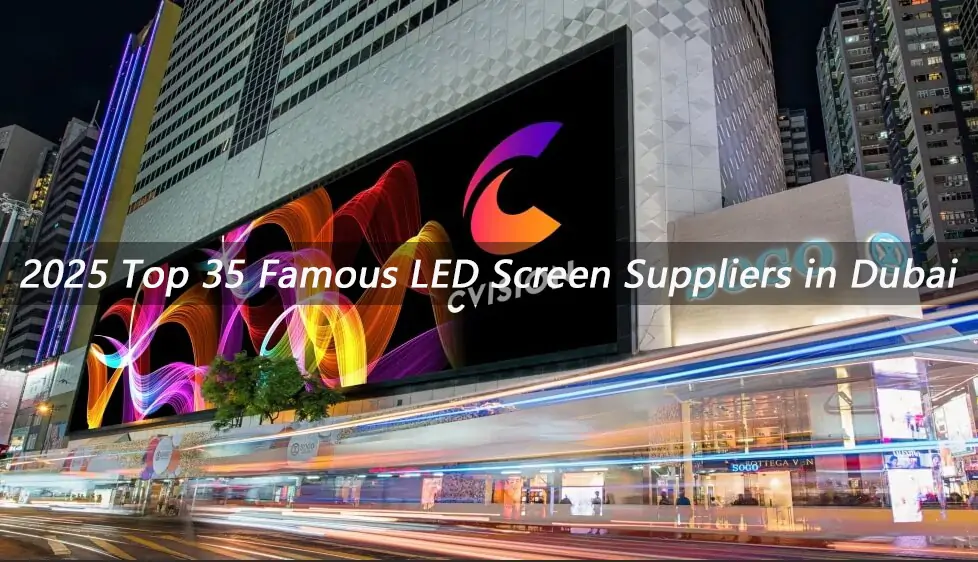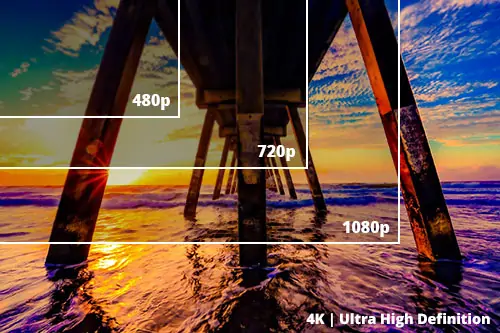LED screen resolution represents the sharpness and color accuracy of images. It is the backbone of how we [...]
Dear Valued Customers, As the Dragon Boat Festival approaches, we would like to inform you that our company will [...]
Dear Customers, As Labor Day approaches, we will have a holiday from May 1, 2025 to May 5, 2025. [...]
The 2025 latest Dubai LED screen suppliers list is here! We summarize the top 35 most prominent LED [...]
Dear Customers, The Qingming Festival is approaching. We will be on holiday from April 4th to April 6th, 2025. If [...]
Catetory
2025 New LED Screen Price for You
2025 New LED Screen Price for You
Fill in the information and get your LED screen budget immediately!
Featured Articles
HD screen resolution isn’t just a number—it’s the difference between ‘Wow!’ and ‘What’s that?’ Here’s how to choose wisely.”
In the B2B world, an LED screen isn’t just a piece of hardware — it’s a visual ambassador for your customer’s brand, and the screen’s resolution of your LED directly shapes how the message is perceived.
Imagine two ads side by side: one pulls crowds, the other gets ignored. The secret? Pixel-perfect clarity.
Let’s consider you entering a shopping mall and seeing an advertisement for a product launch on the LED screen on one wall. You are unable to ignore the display because it is very appealing. The colors are bright, the fonts are clearer, and the overall visual is sharper and highly visible even from a large distance.
In the same mall, there is another LED screen on the next wall showing the new ad, but it is hard to keep oneself engaged because it is not too attractive; the colors are blurry, the fonts are unclear, and the other details in the ad can’t be identified. Now, here the resolution determines how clear and sharp the visuals are shown on the screen, and this is the resolution that makes the difference between these two displays.
However, there are different types of screen resolutions; among these, High Definition (HD) resolution remains one of the most practical and widely used choices for LED screens in 2025. The reason is simple: HD displays are clear, cost-effective, and versatile enough for most viewing distances.
But what exactly is HD screen resolution? What are the terms associated with this? What are the other types of it, and how can an average buyer understand its meaning, applications, and decide when to choose HD screen resolution? This article will be your ultimate guide on everything a buyer needs to know about HD resolution.
1. What is LED Screen Resolution?
Forget TV logic—LED screens play by different rules. Here’s why ‘pixel pitch’ is a new obsession.
The total number of pixels that comprise an image or video on an LED screen is known as the screen resolution. The more pixels the LED panel contains, the sharper and clearer the images appear.
Unlike TVs, where the resolution is fixed regardless of size. They are constructed of small modules or panels that can be put together to create screens of any size. Consequently, an LED screen’s resolution is influenced by both the total number of pixels and their density.
The density of pixels means how closely these pixels are placed or packed together, and this closeness is known as pixel pitch. It is an important consideration in evaluating the clarity of an LED display.
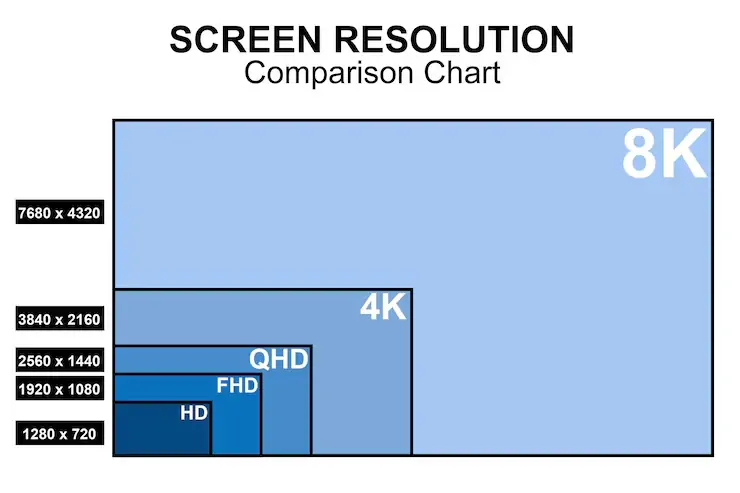
2. HD Screen Resolution from 720p to 4K
There are different types of HD resolution screens, from standard pixels to ultra high definition; each has different uses and applications, and it’s very important for a buyer or advertiser to know the features of each one to make an informed decision.
HD Screen Resolution Sizes List:
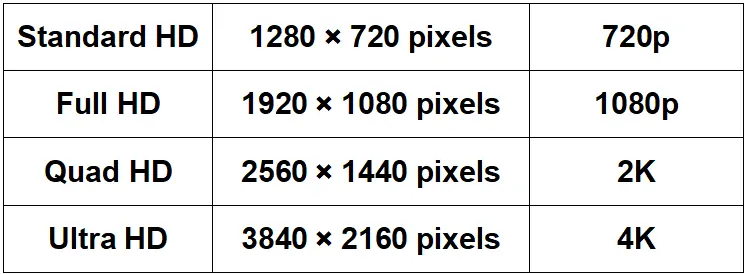
3. HD Screen Resolution Types Explained
- Standard HD: Ideal for projects with a tight budget and medium-distance viewing.
- Full HD: Perfect for applications where people are seated closer to the screen indoors.
- Quad HD: Often utilized in high-end interior settings such as control rooms or product launch events, it offers incredibly sharp graphics.
- Ultra HD or 4K: Provides incredibly sharp detail for up-close viewing in upscale settings like TV studios or upscale stores.
3.1 Standard HD Screen Resolution
Standard HD screen resolution, or simply 720P, is the fundamental 1280×720 pixel resolution and is abbreviated as “High Definition.”
- Resolution: Standard HD has 1280*720 pixels resolution, offering a perfect balance between being sufficiently sharp to look professional and not being so overly complex that it breaks the budget.
- Screen Format: It has the widescreen format, e.g, 16:9, that is known as the standard screen format and is used in everything from corporate level to retail advertisements.
- Clarity: It provides sharper and clearer images than SD resolutions but lower than FHD or 4K resolution screens.
- Brightness: The brightness of LED screens with standard HD resolutions is compatible with both indoor and semi-outdoor displays, such as in hotel lobbies, medium-sized sports, or exhibition halls.
- Color Accuracy: It has strong color accuracy, producing natural tones and efficient contrast, perfect for videos or presentations.
- Pixel Ptich:
Outdoor HD LED: Typically P4–P8, where higher brightness and visibility matter more than ultra-fine detail.
Indoor HD LED: Usually P2–P4, delivering finer pixel density for closer viewing, such as in conference halls or control rooms.
A European rental company recently reported that P3.9 indoor panels in 720p have been their best-seller for mid-sized conferences—largely because they hit that sweet spot between visual clarity, portability, and cost.
3.1.1 Applications Of HD Screen Resolution
Where ‘good enough’ is actually great: Why 720p still dominates airports, classrooms, and rental events.
1. Delivering Messages
1280*720 pixels resolution is used to deliver the message, schedule, or other information in public places like:
- Transport hubs.
- Airports.
- Shopping malls.
2. Exhibitions
They are the ideal option for rental businesses due to their lightweight HD panels, low cost, and ease of setup. Because of their portability, they are utilized for exhibitions and events.
3. Broadcasting
720p resolution requires less bandwidth, thus lowering the operational expenses. Due to this feature, they are used in many TV stations for broadcasting.
4. Retail Displays
HD screens are ideal for in-store advertising because they don’t significantly alter visibility or clarity when compared to other high resolutions at a normal viewing distance. However, because of their affordability, 720P resolutions stand out in this context.
5. Education
Standard HD screen resolutions are widely used for educational purposes such as classrooms, presentations, or lecture halls.
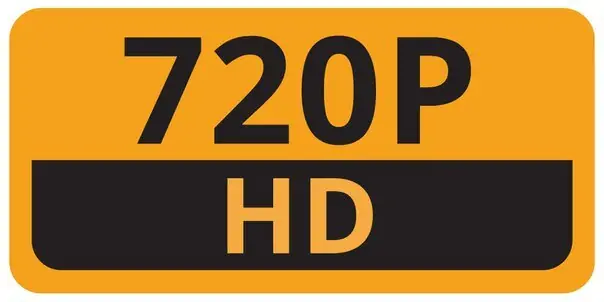
3.2 Full HD Screen Resolution
Double the pixels, double the impact
Full HD screen resolution is next to standard HD, having pixels 1920*1080, also called 1080P resolution. They provide the double visual experience at 720 P resolution, offering more clarity and visibility.
They have the same features as standard HD but with a more professional look, hence have a higher cost than 720p.
1. Clarity
Although the conventional aspect ratio is 16:9, the clarity is what truly distinguishes them. Even on small screens, the video quality is very attractive and enticing; it offers finer details in intricate designs and sharper typography.
2. Color Accuracy
Full HD screen resolution has high color accuracy with optimal brightness that makes them perfect for indoor as well as bright semi-outdoor displays. A retail clothing brand uses a 1080p resolution screen to present the bright visuals of clothes, highlighting the original and fine details of the fabric.
3. Pixel Pitch
- Outdoor Full HD LED: usually around P3–P5, balancing distance visibility with clarity.
- Indoor Full HD LED: often P1.9–P3, giving close-up viewers crisp visuals even in high-traffic areas like exhibition halls or showrooms.
An AV consultant in Singapore noted that P2.5 LED in Full HD has become a “sweet spot” for corporate lobbies—clear enough to impress visitors up close, yet still affordable compared to 4K.
3.2.1 Applications Of Full HD Screen Resolution
Full HD isn’t just “sharper HD”—it unlocks opportunities where visual precision and brand impression matter more than raw screen size.
Corporate Headquarters & Boardrooms: The large companies usually book or have conference rooms with video walls, having full HD screen resolutions. This is because they need to present charts, presentations, and sheets that require sharper and clearer text, more than 720p.
Luxury Retail Stores: The brands that need premium and fine detailing of the products use Full HD screen resolutions. For example, a jewelry brand or high-end clothing brand needs to display the fine detailing of the product’s features, as stitching, colors, and design. Customers demand high-end displays to match up with luxurious products.
Healthcare & Training: Full HD displays are used by hospitals for surgical training and telemedicine consultations. The additional clarity helps students watching operations or doctors evaluating scans.
In short, the full HD screen resolution is needed for premium and more professional displays, as compared to 720, that are enough for good displays.
3.3 Quad HD Screen Resolution
70% clearer than Full HD? Meet the resolution that’s quietly powering elite gaming and mega-billboards.
The Quad HD screen has a 2560*1440 pixel resolution and is also known as 2K resolution. It is named Quad because it has 4 times more pixels than 720p resolution. In contrast with 1080p, it provides more than 70% clarity and detail.
3.3.1 Real Life Applications of Quad HD
The general features of the Quad HD are the same as the full HD resolution; that is Quad HD screen resolution provides a more professional and premium display. However, to make a clear difference, let’s focus on the real scenarios where QHD performs better than Full HD.
1. Larger Screens Without Blur
- Full HD resolution performs well for medium-sized screens up to 17 inches, but when stretched to bigger screens than 27 inches, the pixels get distorted.
- On the other hand, QHD is the superior option for larger displays since it maintains its sharpness on 27–32 inch monitors, gaming setups, and digital signs.
2. More Working Space
- It feels cramped to open two or three windows side by side in Full HD.
- Users may comfortably run many apps, charts, or editing tools at once in QHD due to the larger screen real estate.
3. Gaming & Visual Media
- Full HD is smooth for regular gamers.
- Professional and competitive gamers frequently select QHD because it offers more realistic images, crisper scenes, and more detailed textures.
4. Premium Devices
- Most low- to mid-range gadgets have full HD.
- High-end displays, business computers, and premium smartphones all employ QHD, indicating a quality improvement.
3.4 UHD Screen Resolution (4K)
For brands that refuse to compromise: Why 8.3 million pixels are the ultimate flex in high-end showrooms.
UHD stands for “ultra high definition.” It is the most advanced and premium type of HD screen resolutions having the pixels of 3840*2160. It is also known as 4K HD screen resolution.
3.4.1 How 4K UHD Stands Out?
Features:
Why a Dubai mall upgraded to 4K (and when 1080p would’ve been smarter). Here’s how!
1. Extreme Detailing
Full HD and QHD displays well on standard monitors, while 4K works best on ultra-wide office configurations, video screens, and massive digital signs where every pixel counts.
2. High Dynamic Range & Color Depth
4K panels usually have HDR, which creates richer colors, deeper blacks, and brighter highlights than standard Full HD or even QHD.
3. Durability
Investing in 4K ensures content looks modern and detailed for years, while Full HD might feel outdated on large or high-quality displays.
4. Smooth Motion
4K manages sports, live events, or simulations without blur thanks to its increased refresh rates and improved motion clarity.
3.4.2 Real Life Applications of UHD Screen Resolution
- High-End Showrooms: At close range, 4K offers ultra-fine visuals that Full HD or QHD can’t compete with, making it ideal for presentations on real estate, jewels, or luxury autos.
- Immersive Experiences: Where the detailing of the content makes an impact on the audience, such as stage backdrops and keynote presentations, 4K is used.
- High-End Gaming: Gamers can enjoy realistic graphics and crisp, fast action in 4k resolution screens that are not quite possible with QHD or Full HD.
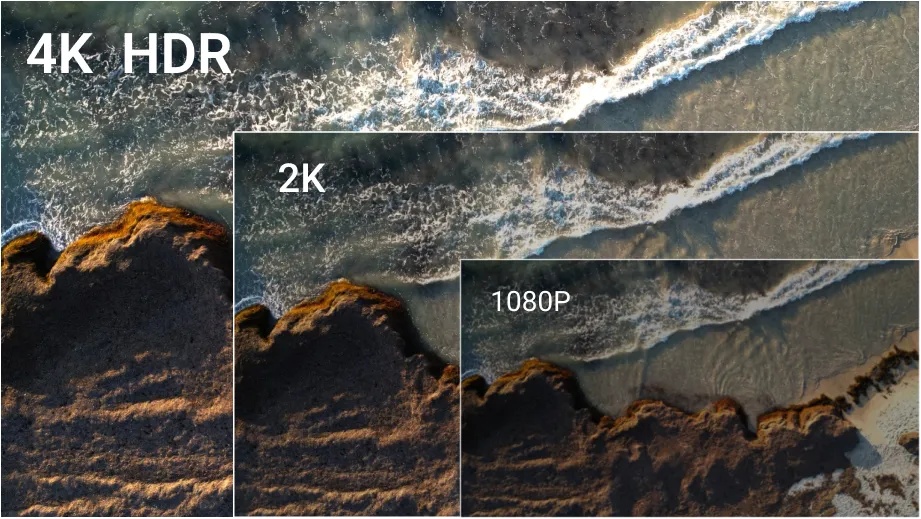
3.5 Side-by-Side Comparison Table
Selecting the incorrect resolution for your LED panel may cost you sales, engagement, and brand effect. To help you choose the ideal pixel density for your requirements, here is a brief guide:

4. Which HD Resolution Screen Is Best?
When choosing an HD LED screen, significant consideration must be taken.
4.1 Viewing Distance
- Select a lower pixel pitch for screens that are indoors and where people are crowded.
- A higher pixel pitch is appropriate for distant outdoor screens.
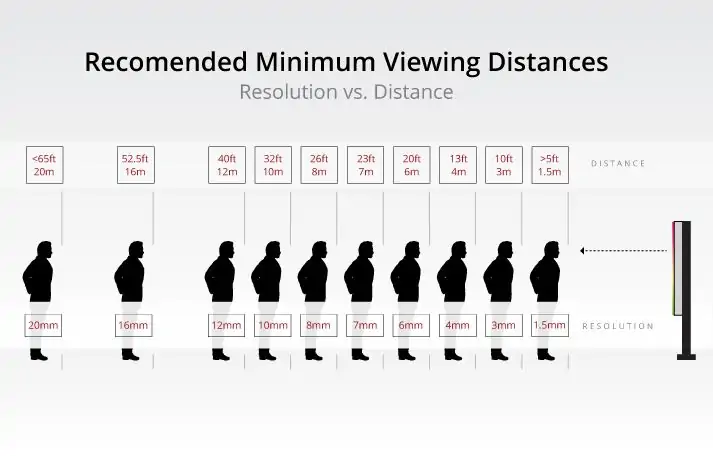
4.2 Screen Size
Larger screens need more pixels to preserve high definition clarity.
4.3 Pixel Pitch
- Sharper images are produced with a smaller pixel pitch, but the expense is higher.
- For faraway viewers, a higher pixel pitch is allowed.
4.4 Brightness Levels
Check out the brightness levels; Outdoor screens require 4000 to 7000 nits, whereas indoor screens require 800 to 1500 nits.
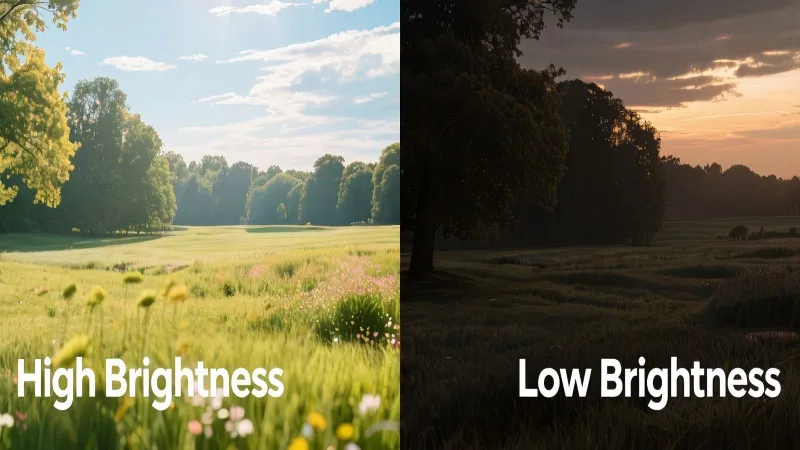
4.5 Warranty and Support
To guarantee long-term performance, always inquire about warranty and support: trustworthy providers provide maintenance and support.
Need help choosing the right LED resolution for your next event?
Eagerleadscreens deals with all kinds of HD screen resolutions and is a reliable and trusted manufacturer of LED screens with over 15 years of expertise. Get a free consultation now!
5. FAQS
Both 4K and HD are best in their respective usage. 4K is best for premium immersive displays, and the basic HD 720P is best for common applications.
720p is the basic HD screen resolution; however the Full HD have 1280*1020.
1080p provides a more professional experience than HD.
1920×1080 pixel resolution is known as Full HD, not 2K.
720P HD screen resolution is not so common in professional uses; however, it is still used in common applications as lecture halls, small-scale retail stores, etc. So, it does not exist completely, but not so common in high-end applications.
This is because for common or typical viewing distances, the 720p works in a low budget. So many TVs still use 720p screen resolution.
It depends on the viewing distance and watching time. Make sure to keep an appropriate distance while watching the screen and move your eyes after at least 15 minutes.
6. Conclusion
HD screen resolution with different types provides the solution for every type of display in all budgets. From basic low-cost 720p to the ultra-HD premium resolutions, brands can provide the best visual experience to their audiences. However, it is very important to know which HD screen resolutions best fit with your project; for this, carefully understand the applications and features of each one. For any consultation, contact eagerledscreen for a free guide.
Related articles
Novastar VX1000 vs VX600 vs VX400: Which LED Controller Fits Your Needs
2025-04-15T01:54:30+00:00August 26, 2024|LED Control System|
The Novastar VX1000, VX600, and VX400 are three universal LED video controllers that satisfy a variety of installation scales from large concerts to small retail displays. Therefore, realizing their […]
2025 LED Poster Ultimate Guide : From Beginner to Mastery
2025-04-29T01:33:41+00:00September 11, 2024|LED Display Screen, News|
In this article, we will discuss LED Poster in terms of definition, working principle, main features, installation, maintenance and more. This is the ultimate guide to the LED […]
2024 EagerLED Mid-Autumn Festival Notice
2024-09-14T03:56:30+00:00September 14, 2024|Company News, News|
Dear Customers,
Thank you for your continued support and trust. The Mid-autumn Festival 2024 is coming, so we will be on holiday from Sep 15 to Sep 17, 2024. If you have […]

